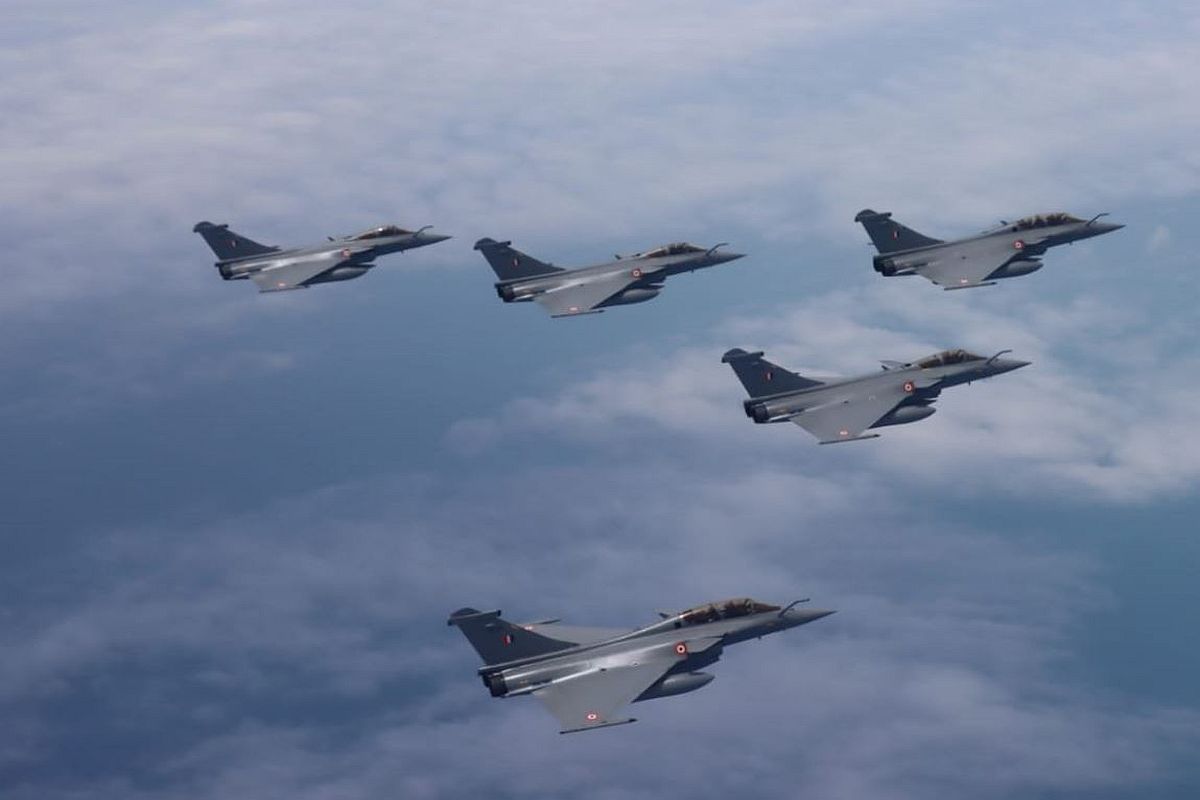Rich tributes paid to brave hearts of ‘Operation Meghdoot’
The nation will always remain indebted to them and their family members, said the Ladakh based Fire & Fury Corps of the Indian Army.
This would be a ‘game changer’ because training by night will strengthen the IAF’s capability to conduct full spectrum operations at the Line of Actual Control on short notice, given Leh’s proximity to the LAC.

(Photo: Twitter | @IAF_MCC)
With the fresh developments on the Line of Actual Control in eastern Ladakh towards the end of August, the Indian Air Force has intensified night flights along the border by its combat aircraft.
This would be a ‘game changer’ because training by night will strengthen the IAF’s capability to conduct full spectrum operations at the Line of Actual Control on short notice, given Leh’s proximity to the LAC.
The capability is fuelled by upgrades to the MiG-29, including advanced avionics and extensive training of IAF pilots ,said Group Captain (retd) R K Das. Leh is not a permanent fighter base, but detachments of aircraft are sent there on a regular basis. The MiG-29s are carrying out extensive, round-the-clock flights from Leh, which will also help the force validate geospatial data to enhance its capabilities in night operations, he said.
Advertisement
“For fighters to undertake night flying up in the mountains is an arduous task due to lack of visibility of ground features that can be seen in the day. The threats encountered whilst contour flying in mountainous terrain are numerous. The terrain in most mountainous areas is highly variable,” Grp Captain Das said.
He said valleys can be wide with gentle sweeping turns or very narrow with abrupt changes in direction. Ridge heights can often exceed 18,000 feet and the rate of change in terrain elevation can vary from gentle slopes to near vertical cliffs several thousand feet in height.
Terrain awareness is a critical component of flight safety in mountainous areas. Wind is almost always a factor when operating in mountainous terrain, Grp Captain Das said. Mountains are associated with strong winds blowing perpendicular to the mountain range and are generally considered mid-to-high altitude risk.
Aircraft performance decreases with an increase in density altitude. In mountainous terrain, a momentary loss of situation awareness could result in a navigation error such as turning into a blind valley. Day flying by itself is a challenging task; therefore to undertake missions at night is a daunting task said Grp Captain Das.
Fighters such as the Sukhoi Su-30s are conducting night operations in the Leh and Ladakh regions, but they are operating from bases that have night capabilities. Apache and Chinook helicopters are also carrying out night-time operations.
Gp Capt Das said that India’s newly-acquired Rafale aircraft are practising night flying in the mountainous terrain of Himachal Pradesh so that the Golden Arrows squadron with its Meteor beyond visual range air-to-air missile and SCALP air-to-ground stand-off weapon will be ready if the situation deteriorates on the 1,597 km-long Line of Actual Control (LAC) in the Ladakh sector.
Advertisement